
Beds, Rollercoasters, Bridges and Beaches: A Red House Painters Retrospective
By Martin Aston

By Martin Aston
While I was writing Facing The Other Way: The Story Of 4AD, there were only two occasions where I comfortably put myself into the story – and one was only in the role of chauffeur (driving Kristin Hersh from Throwing Muses’ London hotel to the band’s soundcheck). The other was certainly more impactful, for both the label and Red House Painters.
It was five years later, 1991, and another interview in another non-descript hotel room in undoubtedly another transient part of London. Mark Eitzel of American Music Club, San Francisco’s purveyors of intense melodic graft, savage brooding and gallows humour, was a wonderfully engaging conversationalist, and as we were finishing up, he muttered something like, “wellll, if you like us, you might like this,” and fished into his bag.
I still have the C100 Memorex cassette that he gave me. There are seven tracks listed on Side One, and nine on Side Two. There are two San Francisco phone numbers (one “day”, one “eve”) and the name “Mark”. The name on the spine is Red House Painters. It turned out that these were acquaintances of Eiztel’s back home, a band that was struggling to make inroads, and had given him a handful of demos to give to receptive listeners.
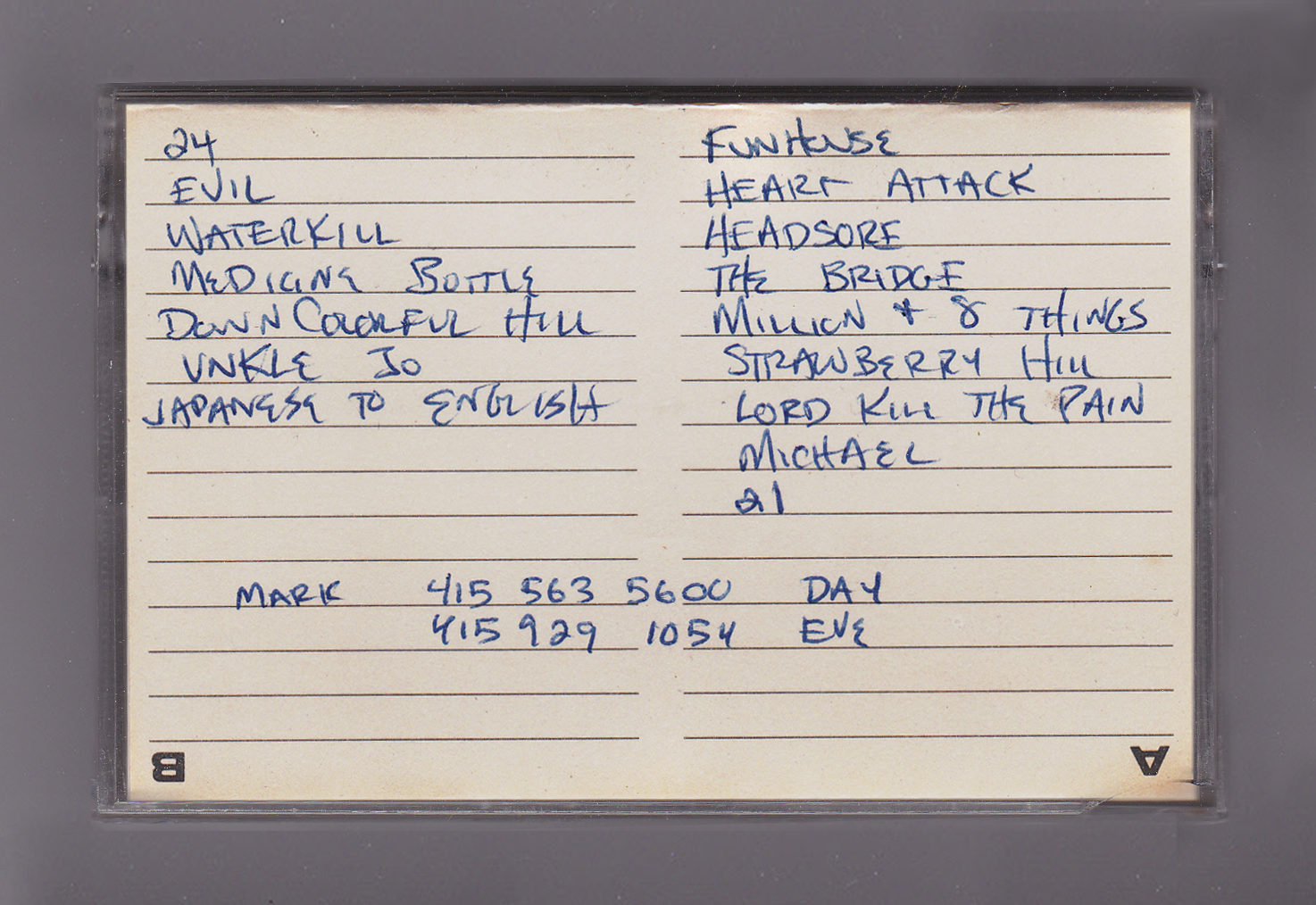
I played the tape; and then again, and who knows how many times? I’d never heard a demo like it – not one lasting 90 minutes and 16 tracks, with more than one breaking the ten-minute mark, with such an overwhelming air of unresolved and unrelenting sadness to both the music and the male vocal, even more than American Music Club. I was reminded too of Nick Drake: less the musical timbre than the effort to dissect those universally identifiable, mortifying feelings without a safety net of metaphorical wordplay, and aspects of Big Star’s Sister Lovers/Third ballads taken to an anthemic level. It’s still the best demo I’ve ever heard, so extreme and committed, just beautiful. It demanded to be shared, so I copied it twice and sent one apiece to Geoff Travis at Rough Trade and Ivo Watts-Russell at 4AD.
“I’d never had a 90-minute demo to listen to,” Ivo recalls, 20 years on. “I’d drive from my flat in Clapham to [the 4AD office in] Alma Road, and I’d stick the tape on and hear the first track, ‘24’, and then I’d arrive at the office. When I started again, I’d wind it back to the start and hear ‘24’ again. So it went on. I now think ‘24’ would have been enough for me to pick up the phone straight away, it’s such a knee-buckling song. But it took me weeks to hear the whole tape.”
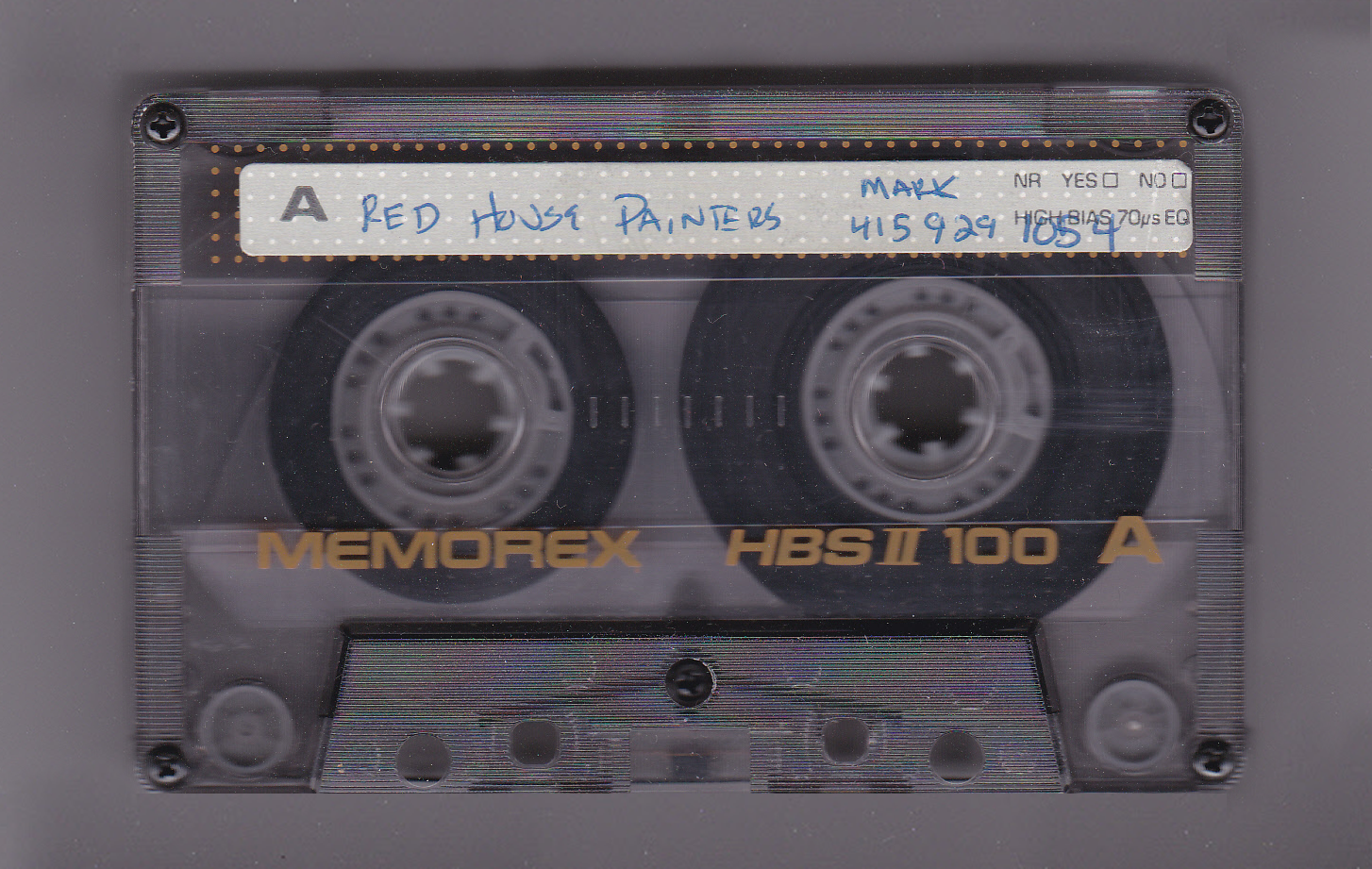
Ivo, who would make Red House Painters 4AD’s first Californian signing in 1992, telephoned Kozelek, who was in the bath when he took the call: “It was very surreal and caught me off guard,” he recalled when I contacted him for the purposes of the 4AD book. “I knew nothing about 4AD, or the music business, although I recognised the name Cocteau Twins when he mentioned them. But I knew Ivo was for real. And, within the first ten seconds of the conversation, that we would release a record on 4AD.”
Born in Massillon, Ohio, several state boundaries from the trend-chasing cosmopolitan centres on the USA’s East and West Coasts, Kozelek was a classic rock fan in his teens, into Led Zeppelin and Pink Floyd, Heart and Peter Frampton, Black Sabbath and Bowie. “Massillon was a football town, and the energy from the Massillon Tigers’ high-school football team was always in the air,” he said. “I didn’t like football and so I went searching for something else, and I found a guitar.”
By the age of ten, Kozelek had also found marijuana and alcohol, and done a stint in rehab at 14. He had channelled his sober energies into songwriting, though what gelled had little of classic rock’s pervading formula. “I’ve liked music that’s fast and hard, and I went through a stage of playing punk,” he said when we first talked in late 1992. “But I’ve otherwise enjoyed songs more than riffs, lyrical songs with acoustic guitars, which sound much better when it’s slow – anything else feels really forced. I’m a pretty slow-paced person. I don't go to clubs, I don't roll down the windows and shout at people. I keep to myself in lots of ways, and my songs come from spending time in my apartment and in bed.”
And his unnervingly honest lyrical eviscerations? “That's what I'm like, and what I'm comfortable with,” he admitted. "People may cringe at what I do, but I cringe at what they like and what they do to have fun. Again, I can't explain it. It's just that all my life I've been attracted to things other people hated."
His first band, God Forbid, had been short-lived, and after Kozelek’s first relationship crisis, in 1986, he decided to relocate to Atlanta: “I wanted out of Ohio and it was an easy move.” An advert he placed in a local newspaper found drummer Anthony Koutsos before the pair moved on to San Francisco. “Atlanta had jobs and a music scene, but it was very redneck. I had visited an uncle in San Francisco in 1988 and I fell in love the moment I stepped on to Market Street. I felt inspiration, immediately, and there was an ocean.”
In his new home, Kozelek had worked as a hotel night clerk, adding bassist Jerry Vessel and guitarist Gorden Mack through more adverts and borrowing a band name from local painting crew The International League of Revolutionary House Painters. San Francisco might have already had one ‘sadcore’ institution, American Music Club, but Kozelek took it further out, stripping everything further back to the bone, with his gorgeous, deep baritone etched with the unmistakable scar of depression. Drummer Koutsos ignored any temptation to speed up the tempo even when RHP songs kept going. Audiences needed patience, and some empathy with a desperate world view. Career-wise, things moved as glacially slow as a RHP song. It didn’t help that the band rarely played outside the San Francisco bay area.
After seeing American Music Club for the first time at the Blue Lamp on Geary Street (“I guess they were the closest thing we'd seen to what we were doing,” says Kozelek, “but they were signed so they were in another league”), Kozelek had bumped into AMC guitarist Vudi and invited him to watch RHP. Vudi brought along Mark Eitzel. Soon Kozelek was dating a friend of Eitzel’s, and before long RHP were opening for AMC. But only small audiences – and not yet one record label –embraced Kozelek’s brand of unhappy. He says he was, “getting tired of nobody knowing us, copying demos on a boombox,” but he’d handed Eitzel some RHP tapes in case he could assist.
Timing is everything. Ivo – overworked, under pressure and after two relationship break-ups, single/lonely and on the verge of a nervous breakdown - was totally open to something that open, pure and bewitching. “Mark had a self-deprecating sense of humour, and was self-obsessed, which is a compliment, because you’d have to be to make music like that…It was absolutely beautiful and very sad and not like anything else at the time.”
Cowboy Junkies’ slow, sepia blues was another potential comparison, but the Canadians’ downtempo habits sounded luminous and inviting rather than RHP’s wounded and stark groans (“Crushingly sombre,” one reviewer reckoned). “That’s when you realise why people like Ivo are so special at what they do, because the music was lo-fi to say the least,” recalls then Head of 4AD US Robin Hurley. “But Ivo heard through the surface noise and the rambling to what was underneath.”
Ivo reckoned the demos were strong enough to release, but told Kozelek (as he had Charles Thompson of Pixies) that he could re-record any of the songs for future release. Named after its longest track – nearly 11 minutes – Down Colorful Hill was marketed as a mini-album (as was Pixies’ Come On Pilgrim) since it comprised just six songs (Ivo’s choices), but at 43 minutes, it outlasted most albums of that era. One track –more uptempo, almost Smithsian in its strumming construction was titled ‘Lord Kill The Pain’ (did Kozelek do in-jokes?). Another lengthy epic that felt like time has been suspended, ‘Medicine Bottle’ very slowly dissected a failed relationship while the closing ‘Michael’ paid painful tribute to, “my best friend,” who had slid into the druggy delinquency that Kozelek had fortuitously escaped.
“Ivo’s choices were perfect,” Kozelek felt, but it wasn’t just 4AD that was in thrall: Down Colorful Hill made Melody Maker’s Top 10 albums of the year, and was classified as debut of the year (even if Q supplied the sole negative UK review, with one star out of five: “rarely, if ever, has an album been quite as misleadingly titled”). “My only regret,” Kozelek added, “is that I remixed some of it, which came out too bright and glossy.”
“Bright and glossy” – surely the only time that these two adjectives (and don’t they have a painterly feel?) have ever been applied to anything Kozelek had done. Red House Painters artwork followed in the same “crushingly sombre” tradition. 4AD’s art department v23 had been as much on board as anyone: “[designer] Chris Bigg described Down Colorful Hill as 'making Lou Reed’s Berlin sound like a disco record,’ graphic supremo Vaughan Oliver recalls. “It really gets in there.” Oliver’s choice of cover was mercilessly accurate: Photographer Simon Larbalestier’s image of a bed draped in a lace bedspread, given a sepia wash to emphasise the image’s solitary power, had all the right tones of beauty and isolation. (There were no band or studio credits: "it all looks so cluttered - who cares who sings back-up vocals? The band doesn't,” said Kozelek).
That said, Kozelek had rejected Oliver’s first idea – a photo of a dead cow hanging by its hooves (talk about extremity), while Oliver had also baulked at the band’s own offering. “We’d normally try to go with the flow of a band’s suggestion, if they have strong ideas,’ says Oliver. “But their idea was this flattened sunflower in horrible colours, which was so far from the music. I persuaded Mark that the sleeve should look like the music felt – melancholic, reflective, romantic and slightly desperate. The line, ‘We went into a big house/ and slept in a small bed’ [from ‘Medicine Bottle’] was what clinched it for Mark.”
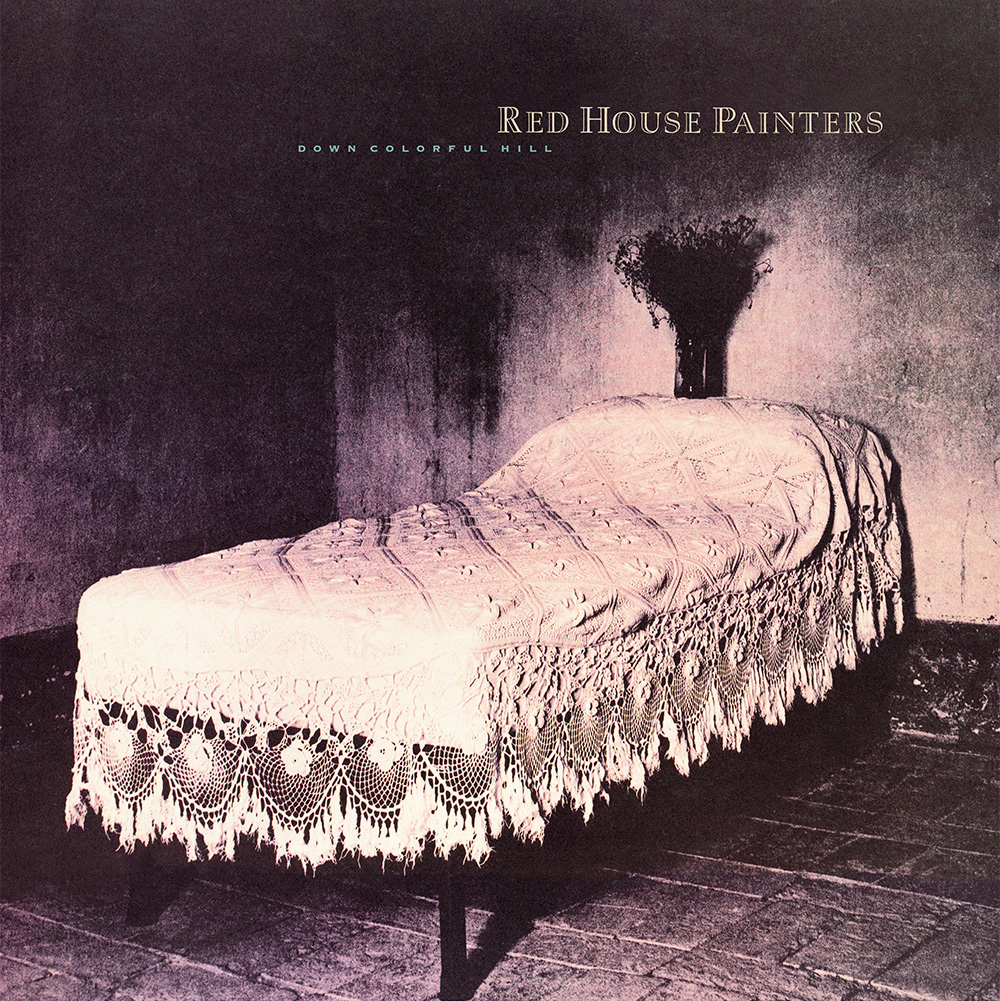
“I like the idea of picking up a record where the music speaks for itself,” was Kozelek’s view. “Like a Joy Division album. You just have this sleeve and, just by looking at it, you somehow know what the music's gonna be like."
Kozelek was buoyant by the time of Down Colorful Hill; he had a record in the racks, his parents could see his dedication had paid off and best, he was in the studio, with a proper recording budget for the first time, to nail the backlog of songs accumulated over the years. By the end of seven months, RHP had 120 minutes’ worth, enough for three albums. But by all accounts it had been arduous. Ivo had trusted Kozelek enough to self-produce the new sessions, which the singer admitted was, “a nightmare. When we first discussed a double album, we thought of Led Zeppelin's Physical Graffiti and Pink Floyd's The Wall, you know, 'great, let's go'. We were so excited. But once we got in the studio, it was hard to get emotional about recording 23 songs - you know, 'one down, 22 to go'...and they aren't AD/DC-type songs either. And I was nervous that people were now paying attention. But Ivo made helpful suggestions and never demanded anything. If we went over budget, we went over budget.” And so over budget they went.
The band previewed the album live at London’s Borderline just two months after Down Colorful Hill was released. Eager to embrace new songs rather than old, Kozelek refused to play any of RHPs debut until he relented for the third encore, with a solo version of ‘Michael’. The mood was reverential, but I’m sure that night an audience member heckled, “Now I know why she left you!” (Kozelek claims it happened at the Paris show, but how would I have known that?).
A double album (4AD’s third, after This Mortal Coil’s Filigree & Shadow and Blood) went right against the grain of the short, sharp resonance of Pixies, Lush and the latterday ‘pop’ version of Cocteau Twins – cumulatively, 4AD’s most commercial arm. But 4AD were never driven commercially, and a double album was to be the full immersive RHP experience, a real statement of intent. (in any case, it lasted 76 minutes, not much more than some single CDs). With a richer sound, but no less uncompromising a vision (‘Mother’ was the album’s 13-minute marathon, most likely written in bed, slumbering while attempting to kill the pain), Red House Painters included several of Kozelek’s very best songs, such as ‘Katy Song’ (with its aching wordless coda) and ‘Mistress’. A pensive, virtually solo ‘Take Me Out’ has become Ivo’s all-time favourite track on 4AD. “The line, ‘A voice that soars and takes my wounds with it’ always made me think of both Elizabeth Fraser and Tim Buckley,” he says today.
‘Funhouse’ was nine minutes of anti-fun in the style of its predecessor’s ‘24’ that just built and built. ‘Dragonflies’ and ‘Brown Eyes’ were briefer missives. My own favourite was ‘Rollercoaster’, with yet another rollercoaster reference in ‘Grace Cathedral Park’, which Kozelek said reminded him of his youth, “and my happiness then, during that problem-free time before you hit puberty and all the depressing stuff starts."
The, “depressing stuff,” was everywhere, with a big, abandoned rollercoaster with its line of empty seats (presented in another sepia wash) occupying the cover image (not a Larbalestier this time, but an agency stock photo. And again, no credits of any kind bar the songtitles). It was another lyric from ‘Grace Cathedral Park’ that provided the opening gambit for the press biography that 4AD had commissioned me to write for the double album. I had my choice of lacerating images that cut through the vaulting poetry and occasional acidic commentary of the day, but went with this: "Tell me, why are you like this / are you the same with anyone / save me from my sickness and tell me why do you treat me like this?"
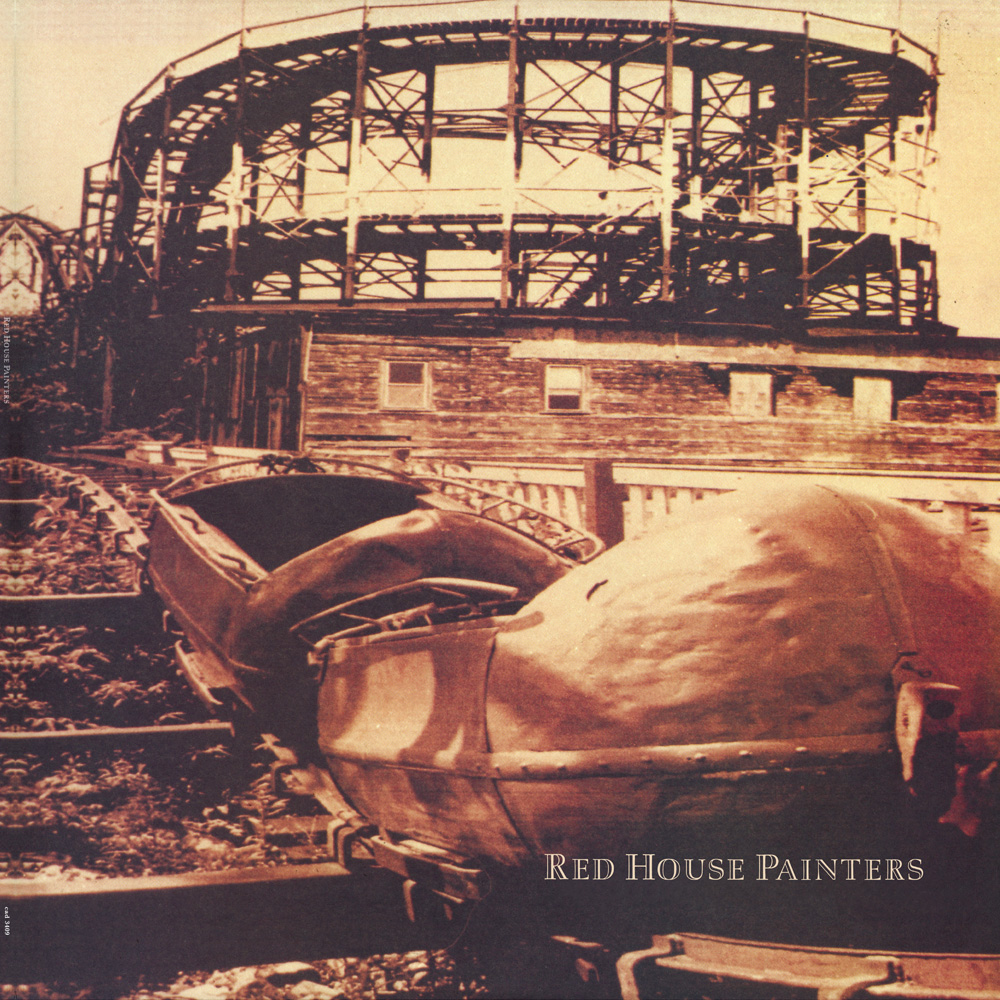
The (in hindsight, somewhat over-egged) bio reflected how much I’d committed to Kozelek’s vision: “The singer is left alone, with his desperate pleas for comfort, for understanding, for salvation. For anything except to be left alone. If you thought that there wasn't much illuminating scope left for such blatantly confessional material, that there was no rooms left at heartbreak hotel, there comes a band that play it so straight, so unnervingly pared back to the bone and sung with such chilling accuracy and clarity, that the effect is as emphatic as it ever was. If each and every song is a direct lift from the life of singer/ songwriter Mark Kozelek, then they could just as easily be about anyone, about us. The sentiments are too familiar to be otherwise.
“Just to irretrievably seduce us, Kozelek's melodies are mirror images of the lyrics' languid desolation - beautifully elegiac, perfectly understated. Red House Painters' music is as unornamented and dolorously slow as it comes, so that Kozelek's words have ample time and space to sink in. 'Sink' being the operative word; since each phrase is pregnant with some facet of regret and remorse, you can't escape the gravity of the situation.”
So constant was Kozelek's resignation that it was easy to view the new album as one smouldering diatribe to a miserably failed relationship. "That sounds fine to me," Kozelek told me in a later interview, admitting to how an isolated childhood had brought a myriad of complications to his adult life, with ongoing problems with intimacy and jealousy. He was now regretting discussing them in interviews, and disturbed by being psycho-analysed by virtual strangers. "People have said some accurate things before but I don't know the best way to describe what I do," he audibly shrugged. “I just write my songs and try to please myself. If it's enjoyable for others to listen to, that's fine, but I can't say I try to make things that way."
Down Colorful Hill had referred to the hills of San Francisco - Kozelek was living in Nob Hill, above Chinatown - but Kozelek had avoided any such descriptions for the new record, or for the single album that followed just six months later in October 1993, mopping up the remaining tracks from that mammoth recording session, another sign of 4AD’s fervent belief. “Great!” said Kozelek. “Any other label would have said no way.”
At least Kozelek had left over some signature classics for the second Red House Painters – the seven-minute opener ‘Evil’, the ‘Medicine Bottle’-evoking ‘Uncle Joe’ and the drawn-out torpor of ‘Blindfold’. There was one advance too, the first in what became Kozelek’s penchant for cover interpretations, versions that he’d write new music for. There were two Kozeleked tracks, Simon & Garfunkel’s ‘I Am A Rock’ (inspired by the two months he’d spent, “hiding out in Tennessee, not talking to anyone, because I was so devastated about my life that I couldn’t write anything”) and the American national anthem ‘The Star-Spangled Banner’. “It was the polar opposite of everything else that we, or anyone else, were doing,” he claimed.
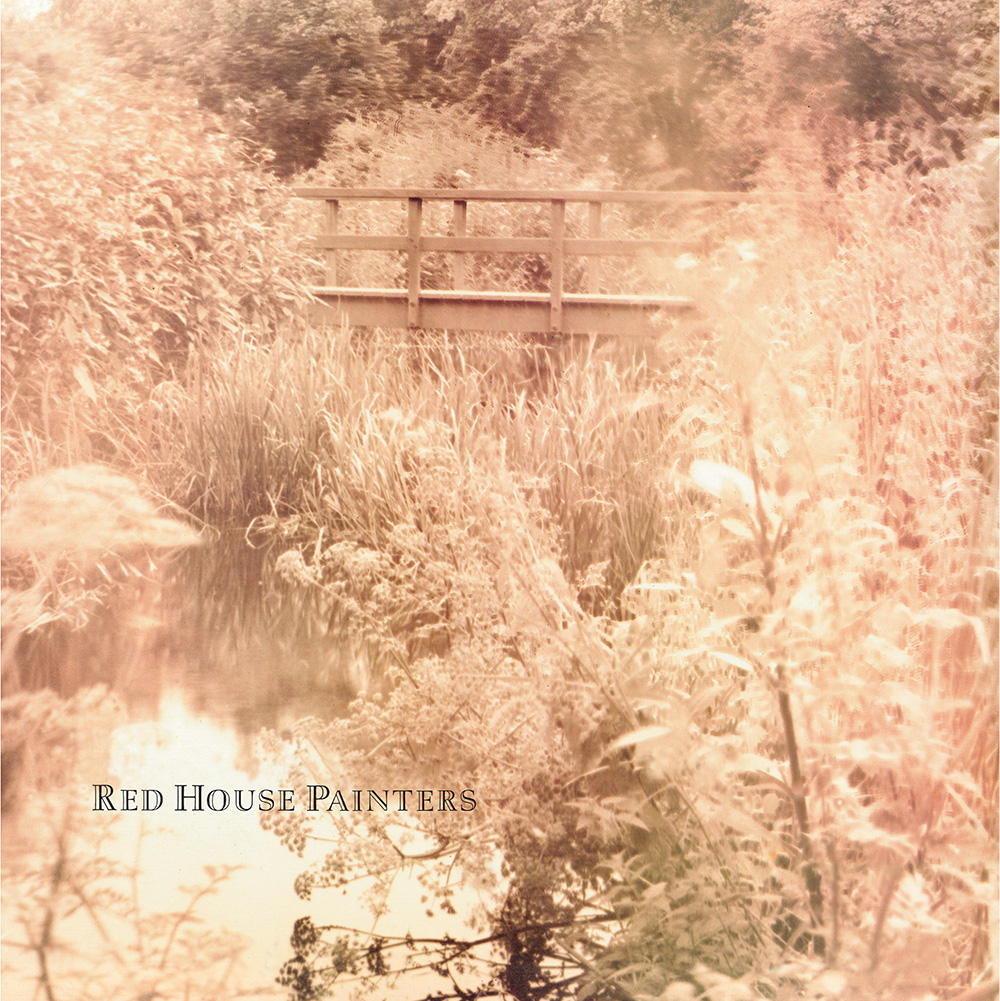
Among fans, the two self-titled albums are referred to as Rollercoaster and Bridge because of the artwork. Again, v23’s choice was a a solitary image, a wooden bridge, though it was set in an unusual (for RHP) setting of pastoral bliss. The sepia wash gave it a comfortable familiarity, but by this point, you could also say it veered close to a formula. One interpretation was that Kozelek was forever caught in regret and remorse, seemingly unable to move on - either musically or lyrically - to resolve his weighty issues. On top of the anxiety of recording, he said he disliked touring, and always anxious, felt the pressure of expectation. His self-esteem fluctuated madly, and he’d get homesick, and new tracks 'Over My Head', 'Red Carpet' and 'Drop' were all written on the road in a state of flux, illness and misery; several lyrics mentioned the ocean, from which he was momentarily estranged.
Back in the studio, to make a single album for once, Kozelek admitted it, “had taken for ever to complete” and that 4AD were forced to intervene. “I was learning more as a producer, but it was still a struggle,” he said when we talked for the press bio for Ocean Beach. “I was eighty per cent done and then went into horrible fits of insomnia that delayed the record for months. I thought the sound of my voice was too nasally and 'Summer Dress' and 'Shadows' took forever to complete. 4AD finally called and said 'Mark, you gotta just finish the thing!' and it was great advice. I did the vocals and put it to bed.”
At 54 minutes (including the hidden track, the instrumental ‘Brockwell Park [Part Two’], while the double ten-inch vinyl is over an hour due to a bonus solo cover of ‘Long Distance Runaround’ by Kozelek’s favourite prog rock behemoths Yes), the album wasn’t short. But though far from an about-turn, Ocean Beach was an altogether gentler record, the more minimal, unornamented, reflective and semi-acoustic feel resembling a (relative) calm after the storm. “Less anthems, a different kind of beauty,” Kozelek suggested.
Actually, Ocean Beach wasn’t meant to turn out that way. Kozelek admitted that the album had less variety that its predecessors because its songwriting span was that much shorter, and that the poppier, more colourful tracks simply hadn’t turned out so well, and so were left off. But he also wanted to avoid, “overdub confusion”, where the indecision over a track's worth led to more layers and imposed atmospherics. This time, he wanted something more personal, a record where you could hear every sound as it was recorded. If Kozelek was never to make another record, he could say “'this is what he sounded like….Ocean Beach was the only honest way forward.”
Koutsos, Vessel and Mack only truly feature on ‘San Geronimo’, ‘Red Carpet’ and ‘Moments’, and as a result, Kozelek sounded a bit more rested, starting with the opening, meditative instrumental ‘Cabazon’ (a rare breed of fish caught on a little expedition Mark and girlfriend Katy took in Medecino). ‘Summer Dress’ was borderline-carefree, though the piano ballads ‘Shadows’ and ‘Drop’ still cast a veil of abject gloom. The cover was a close-up of a disused windmill, weathering the elements on Ocean Beach to the west of San Francisco, more grey than sepia-toned, but still grainy, austere, forlorn.
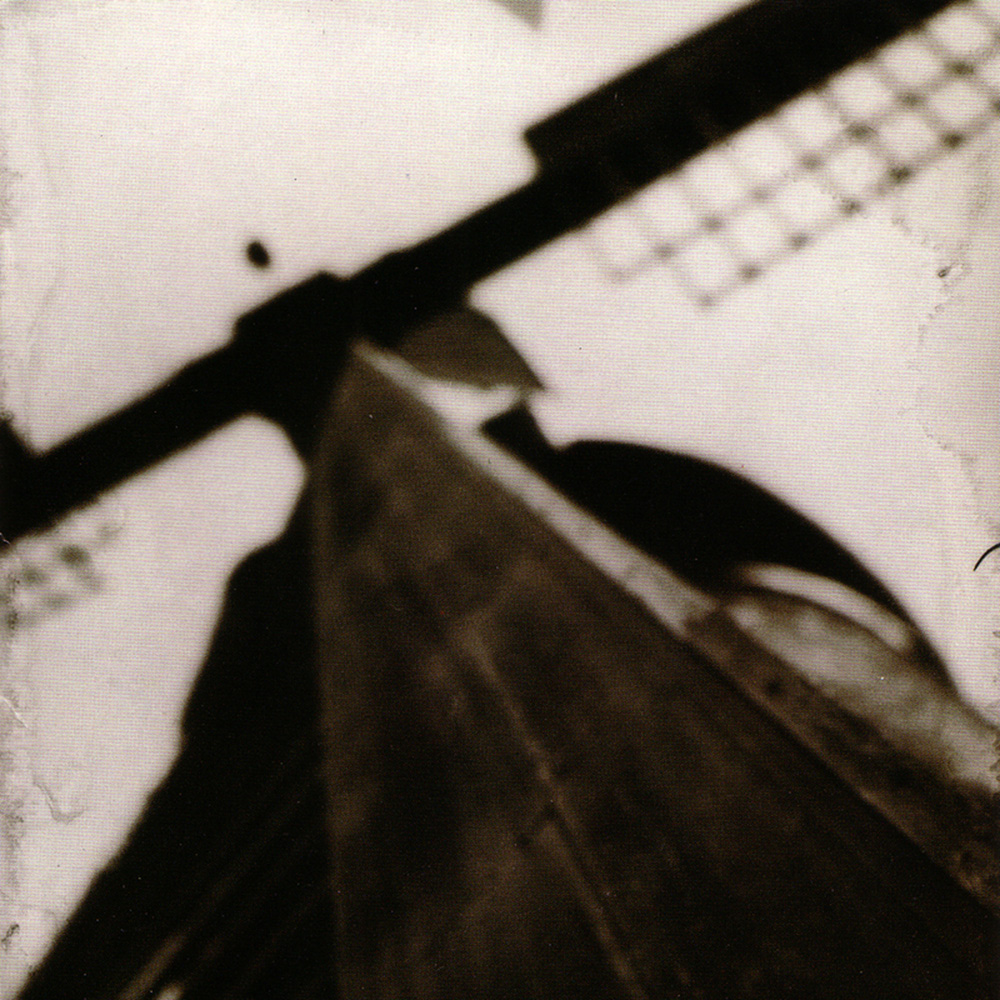
Aware of the polarising opinions (Melody Maker’s review to come, by a teenage Caitlin Moran, labelled Kozelek “Mopey Mark” and a “misery junkie”), my Ocean Beach bio kicked off with, “By this point, Red House Painters' music will have divided those who have heard the San Francisco quartet into two camps; the die-hard, head-over-heels lovers and those who callously decline to embrace their magnificent melancholy…Album-of-the-year or get-out-of-my-face, simple as that.”
Kozelek talked of making a gtr/voc solo album next (he admired labelmate Kristen Hersh's solo debut Hips And Makers), but after meeting a drummer while producing 1995’s River Of Darkness for singer/songwriter Hannah Marcus, the plans had evolved to include a band. The other Painters had their solo projects and other bands anyway, and he needed to know how unpredictability and spontaneity felt again. He talked of doing “four or five covers… I’ve got to take a break from myself.”
This decision eventually created a crack in the relationship with 4AD. Ivo, post- nervous breakdown and out of love with music, wasn’t feeling it. “There were some things that, a year earlier, I’d have had the strength and ability to voice, to persuade Mark to alter,” he says today. “Like a crazy guitar solo [on ‘Over My Head’ from Ocean Beach] that just fizzled out. There’s some gorgeous stuff there, and I’d probably feel more positive now, but I was disappointed at the time.”
This sense of disappointment was only to increase when lead guitarist Mack left the band. Kozelek’s more restricted skills were now centre stage, at which point he expanded the guitar solos, either as a shift towards a more classic/progressive rock centre ground or to replace himself, to fill in the space so that he didn’t have to. “Mark’s next demos featured covers of Genesis and Wings songs that struck me as silly, with longer guitar solos,” Ivo recalls. “It all influenced my decision not to work with them again.”
Indeed, an 11-minute cover of Wings’ ‘Silly Love Songs’ was not representative of the band that Ivo had first fallen for. There were covers of Cars and Yes songs too. Kozelek was sanguine about the scenario. “It was the first time I was being told what to do,” he recalls, “to lose the guitar solos and lose a few songs. It wasn’t the 4AD I’d signed to and I suppose I wasn’t the same artist anymore and we parted ways. I had a great start with 4AD, but it was just time to move on. They were a great label, but I didn't have the romantic connections associated with the label that other artists did. I felt confident I’d have a career with or without 4AD. I wanted to sing and play guitar and didn’t care much about whose logo was on the record. It kind of went back to my early memories with music. I loved Black Sabbath, but who cared what label they were on?”
After Island Records had released Red House Painters’ next album Songs For A Blue Guitar in 1996, Kozelek says he received a postcard from Ivo: “It said, ‘beautiful record, Mark!’”
Today, Ivo feels the same. “It was the right decision at the time to let them go, but in hindsight, it was probably the stupidest decision I made at 4AD – though hardly the worst decision I ever took! I should have let them release it on 4AD.”
In 1999, the relationship was replenished when 4AD released the double CD Retrospective. It was a chance to restore mutual respect, and for Ivo and Kozelek to renew a bond that had meant so much to both. “I was down in LA working on [Cameron Crowe’s film] Almost Famous and Ivo and I sat in on the mastering together and had dinner and I visited him at home too, “ says Kozelek. “He seemed happier than I'd ever seen him.”
It was also something of a watershed period for Ivo, and a swansong, having decided that same year to sell his share of the label that he’d nurtured for nearly 20 years, and to leave the music industry, never to return. Today, having lived with the four Red House Painters records that he did release, he says that they’re his favourite band ever on 4AD – that’s truly saying something given that includes Cocteau Twins, whose relationship with 4AD surely defines the label more than any other.
My own relationship with Kozelek had been put into storage for a time. Asked to write the sleevenotes for Retrospective, I handed over something that I felt represented the band, and my feelings for them, and was told that Kozelek found them, “too depressing.” Reading them back today, I know what he means; that said, some of it adapted passages from my 1993 press bio, but what had been taken as a compliment in 1993 probably felt like an albatross in 1999, like a cliché to be wriggled out from under. Maybe I’d just run out of things to say about Kozelek. Certainly the kind of ‘tribute’ that Kozelek moved on to– for example, organising and contributing to an album of John Denver covers, and his own solo albums entirely comprising acoustic covers of AC/DC and Modest Mouse songs – didn’t entice me any more than they would have done Ivo.
I was able to get reacquainted with Kozelek when he answered my questions for Facing The Other Way, and then in person when he played London’s Union Chapel in the autumn of 2012, and dedicated a song to me from the stage along the lines of “I wouldn’t be here now if not for…”


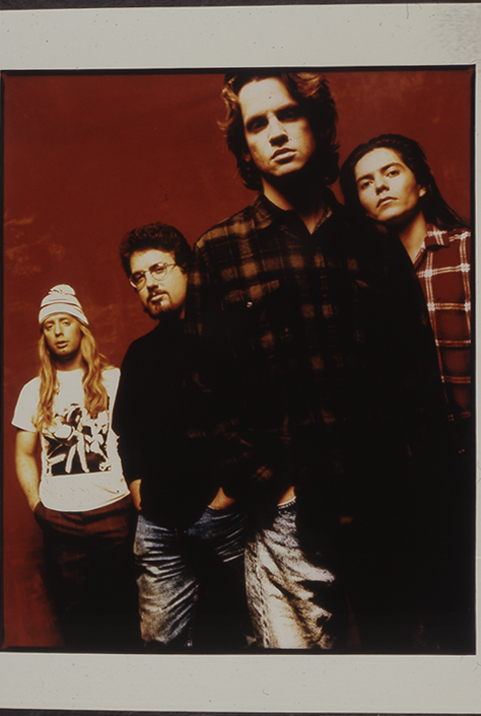
Well, timing is everything. Red House Painters were like a bolt out of the blue – I loved singers such as Tim Buckley, Scott Walker, Nick Drake, masters of blue melody, and to have a fresh voice pursuing that agenda was a real boon given it was all post-Madchester, shoegaze and a lot of average grunge and Britpop. It was like a shot in the arm for 4AD too. Ivo had just signed the American-born (but UK resident) Heidi Berry, and reviewing the core signings that 4AD made in the Nineties, such as Mojave 3 and Tarnation, RHP can be read as the spearhead of a new era of folk/country roots music, with Kozelek and Berry the equivalent Nick Drake and Sandy Denny of the new age. It was as if Ivo was reconnecting to the singer-songwriter roots scene that he’d grown up with in the late Sixties, a time when those more intense examples of counter-culture dreaming were still marginalised in Britain: Gene Clark and Gram Parsons albums were only US imports in the era of Beatles/Stones supremacy and Led Zeppelin’s ascendency. It wasn’t until 1995 that the US trade magazine The Gavin Report created the ‘Americana’ chart, showing that 4AD were ahead of that particular curve.
The early Nineties were also a time of intense competition, as independent music had gone overground and major labels were now throwing huge advances around, forcing those indie labels that felt like it to up their own ante, to adapt their marketing model to include promo videos, singles formatting (remixes, extra B-sides, packaging etc) and the pressure from bands themselves - and their managers – to demand a greater possibility of crossover success. Red House Painters were not part of that process; not only no credits on those sleeves, there were no band photos, just like those good old Floyd/Led Zep days. The music came first. As soon as Island got involved, releasing a video for The Cars cover ‘All Mixed Up’ complete with lip-syncing and a fairy figure wandering around looking “all mixed up,” it felt over.
Kozelek, though, is a survivor, and another two decades on – through albums by Red House Painters’ successor Sun Kil Moon, solo and collaborative albums – he has finally established the kind of profile that he has always deserved. His acoustic (nylon-string) guitar playing has improved dramatically, he’s set aside the 11-minute Wings covers, and his own lyrical narratives and core songwriting has become stronger, 25 years after he first formed RHP. I knew that C100 Memorex cassette was the harbinger of something special, unique, treasurable. And Red House Painters’ 4AD catalogue is considered in much the same way.